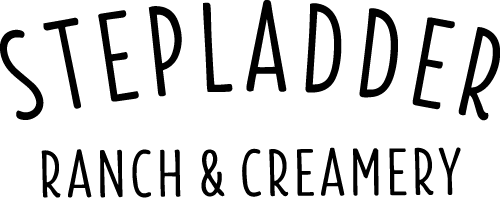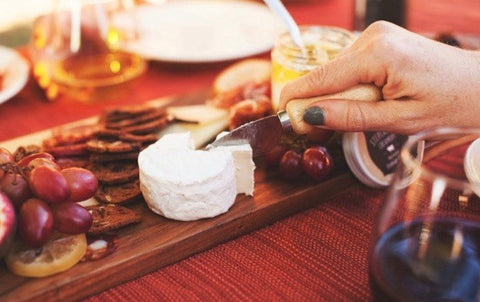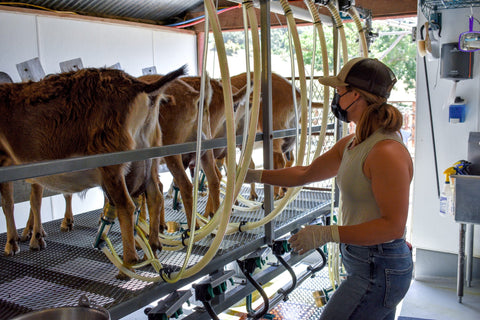Ragged Point and Big Sur are two small format Bloomy Rind Triple crème cheeses. If you don’t know what any of that means, don’t panic! It basically just means that these are Stepladder’s rendition of a traditional Brie style cheese in a small wheel format we refer to as a “button”.
Learn all about how we make these little gems in our “Cheesemaking 101” video here:
As mentioned in the video, the “triple crème” portion of the title refers to the fact that these cheeses actually have cream added to the milk supply during the creation process, which is what adds to the rich flavor and creamy texture of the cheese.
The term “bloomy rind” refers to the fact that the rind on the outside of the cheese is created by a fungal culture that we add to the milk supply. This culture actually “blooms” on the exterior of the cheese over the 2-3 weeks that the cheese ages in our specially designed bloomy rind aging room. This creates a fluffy white rind that protects the interior creamy paste of the cheese.

(Ragged Point in its various stages of aging from day 1 to the finished product.)
While both varieties of our triple crème cheeses are made with the same basic recipe, there are a few key differences between the two. While the Ragged Point is made with only cow’s milk and is therefore available year-round, the Big Sur is made using a blend of both goat and cow’s milk and is only available seasonally (Spring through Fall).
Additionally, if you have ever tried the two side by side, you may have noticed that the Big Sur has a darker coloring to the rind than its cow’s milk counterpoint.

This difference in coloration is due to the fact that the Big Sur actually receives a thin coating of vegetable ash before aging. This harkens back to a traditional method used by French cheese makers to help balance the pH of the cheese as it ages and provide a more hospitable environment for the cheese cultures to thrive. It also helps us visually discern the difference between the two!

(Big Sur being coated with a vegetable ash.)
While the addition of cultures and ash may sound odd, these are tried and true techniques passed down through generations of devoted cheesemakers. The rinds on both of these cheeses are completely edible and even create a rich, peppery flavor that adds complexity to the cheese. While the rind is the favorite part of this cheese for some of our customers, it is also worth saying that others prefer to avoid the rind and instead eat just the creamy paste in the center.
For those who prefer a more robust flavor, the sharpness of the cheese will only increase as the cheese ages; we actually have some customers who like to buy the cheese fresh and then give an extra couple of weeks in their fridge so they can enjoy it at its sharpest!

(Big Sur (ash rind goat and cow’s milk blend) next to Ragged Point (pure cow’s milk)
Luckily, both of these cheeses are equally delicious and are great crowd pleasers for those looking for a sure bet in the creation of their next cheese board.
We generally recommend letting these little buttons sit out at room temperature for about 30 minutes before serving in order to fully bring out the robust flavor and creamy texture of the cheese.

They also go well in a variety of recipes! Check out our blog to view our Grilled Apple & Walnut Sandwich or our Chanterelle Tartine recipes.
You could also try wrapping them in a puff pastry dough and baking them for a baked-brie style treat, or pairing them with honey or your favorite fresh, preserved, or dried fruits to create a mouth-watering flavor fusion on your next cheese board!

Find us online to check out our Blog for more recipes and information on the farm, find our products at your local Farmer's Market, or order today from our Online Store to have your cheese shipped straight to your door.



